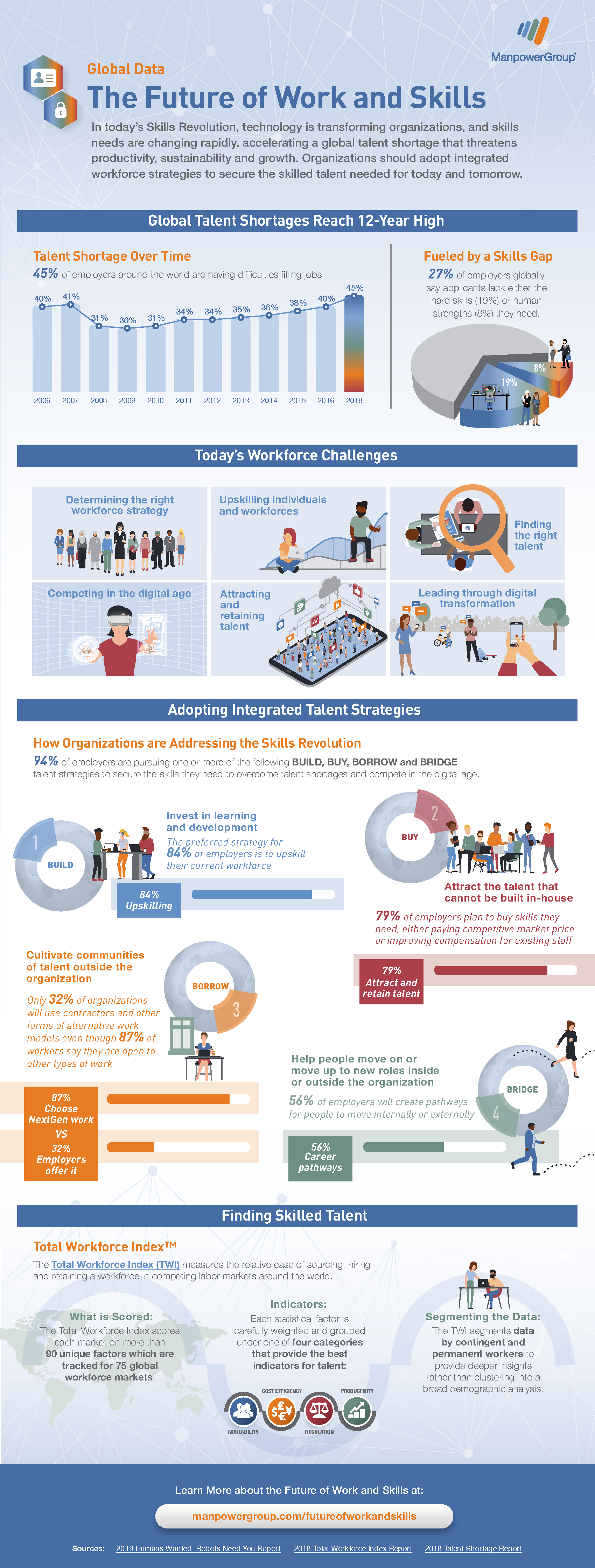In workplaces around the world, great talent is getting harder and harder to find. The latest statistics show that, as technology continues to transform organisations and skills-needs are changing rapidly, global talent shortages are reaching new heights.

Some 45% of employers who took part in a recent global survey by the ManpowerGroup reported struggling to fill vacancies, with 27% saying applicants lacked either the hard skills (19%) or human strengths (8%) needed to fulfil those roles.
Now more than ever, say the survey authors, technical skills are hard to find and soft skills are hard to train.
These figures are very concerning, and it is clear more needs to be done to prevent a sustained global talent shortage, which would threaten global productivity, sustainability and growth. Individual organisations need to act now to secure the skilled talent they will need for today and tomorrow.
At Cranfield, we believe the key to plugging the talent gap is for organisations to develop a clear and effective people strategy aligned to their business objectives.
Following a strong people strategy that links HR metrics to business performance provides a solid foundation against which organisations can evaluate the potential impact of changes in the external environment caused by factors such as emerging technologies and artificial intelligence, as well as changing workforce demographics.
A clear, documented people strategy is also the tool HR teams need to create the ideal workforce, by setting out the conditions that will get the best out of existing employees, as well as the methodologies and processes that will see the organisation attract in new talent.
Addressing the skills revolution
As suggested by this research, there are four areas which an effective people strategy should cover. They are:
Build
Firstly, employers should commit to investing in learning and development for their existing staff, upskilling individuals and teams to fill any gaps in their knowledge and equip them with new and useful skills for the workplace. According to the research, this is an option favoured by the majority (84%) of employers.
Buy
Secondly, employers should look to attract the talent that they cannot build in-house through robust recruitment processes that cast the net wide and – if they need to – seek to fail early to avoid wasting time and effort on the wrong people. Businesses should be aware of the need to pay competitive market price for the skills they need, and to improve compensation for existing staff accordingly.
Borrow
The survey found 87% of workers were open to doing alternative forms of work, but – conversely – that only 32% of organisations were willing to use contractors and other forms of alternative work models. But new challenges will require organisations to think differently when it comes to who works for them – and how. Businesses would be wise to cultivate communities of talent outside of their organisations that they can draw on flexibly as needed.
Bridge
The final way in which employers can help to plug their talent gaps is to help people within their organisation to move up to new roles within the business, or outside of it if necessary. The survey found just 56% of employers claim to do this already.
In conclusion, it is clear to see that we are facing a global talent shortage, but the good news is that there is still time to do something about it. Organisations should act now to shore up their strategies – before it is too late.




